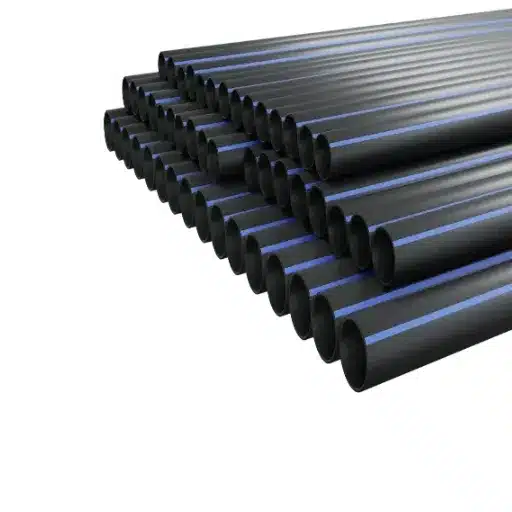Highest-Density Polyethylene (HDPE) fusion pipe has in fact disrupted the piping industry with the utmost and high-grade durability, flexibility, and combined seamless performance. A highly resilient system of piping has been engineered to withstand the performance of arbitrary conditions, thereby being tall in preference from water distribution to gas pipelines to industrial processes. Unlike most conventional piping materials, the fusion HDPE pipes can give an ultimate resistance against corrosion, chemical attack, and environmental stresses, hence guaranteeing a long service life to the installations. This article discusses the key features, benefits, and applications, giving deeper insight into why HDPE fusion pipes stand as a truly state-of-the-art option for infrastructure and industrial projects. The technology of HDPE fusion must be a known one to any contractor, engineer, or other stakeholders in the industry if they want to achieve optimal performance and cost-efficiency in their next piping project.
Introduction to HDPE Fusion Pipes
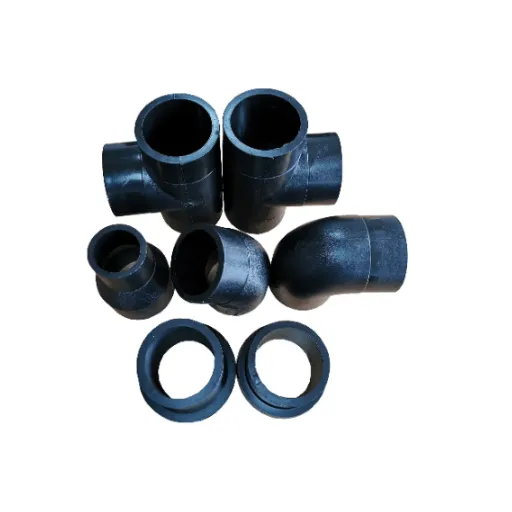
What is HDPE?
High-Density Polyethylene (HDPE), being a thermoplastic polymer, is well renowned for the strength-to-density ratio, versatility, and chemical resistance it offers. It possesses polymer chains produced through ethylene polymerization, which results in it being lightweight and durable. The molecular structure of the material, hence, provides it with immense impact resistance capabilities and also allows it to resist environmental extremes, such as UV radiation, temperature, and so on.
Since the corrosion resistance in HDPE is quite good, it is totally unlike other materials and thus is the material purifier for critical applications, such as pipe works. Unlike metals and others that corrode or rust, HDPE does not corrode, rust, or react chemically with many compounds, ensuring its longevity with very little or no maintenance at all. Combining this property with the fact that they are fused in a seamless construction through an advanced welding process ensures the overall strength of the structure.
HDPE has been and is being used in multiple industries for water supply, gas distribution, and industrial fluid management. Second, from an environmental sustainability perspective, the material is recyclable and is usually used in those applications that aim to lessen the environmental impact. There, of course, may be innumerable other reasons for considering HDPE as of superior grade for advanced engineering and infrastructure projects.
Overview of Fusion Technology
Fusion is a good technique applied during the joining of High-Density Polyethylene (HDPE) pipes and fittings, and must be implemented for the assurance of reliability and durability in any application. It mostly entails the application of heat and pressure between two pipe ends to forge a single joint without any weld line that can endure mechanical stresses and environmental factors. These types of joints were superior in performance to the conventional mechanical coupling in nature, and potential leakage points were eliminated.
Of the two main fusion methods commonly employed in HDPE pipe installations, these two are butt fusion and electrofusion. Butt fusion involves the simultaneous heating of the ends of the two pipes until they reach their melting temperature and then pressing them together to create a single integrated structure. An electrofusion fitting uses an embedded electric heating coil within its design; once energized, the coil melts the pipe and fitting interiors where they meet, thereby establishing a strong bond. Both methods undergo extensive testing and certification in conformance with international standards for structural integrity and operational safety.
The adoption of fusion technology yields numerous benefits for industries, especially for applications where a high level of reliability is required, such as water and gas distribution systems. Fusion joints are characterized by excellent long-term durability properties under chemical corrosion conditions and can withstand high-pressure environments. The already proven environment-friendly process reduces material wastes and excludes contamination hazards that a joint failure may entail. These factors thus render fusion technology a key element in the design and construction of modern infrastructure programs.
Importance of HDPE Fusion Pipes
High-density polyethylene (HDPE) fusion pipes, with their durability, flexibility, and adaptability, have found their way into modern infrastructural systems. These pipes remain unaffected by corrosion, chemical exposure, or environmental stress while being employed in the fields of water and gas distribution, wastewater treatment, and industrial processes. HDPE pipe fusion creates a homogeneous joint; hence, any system constructed with these pipes will offer more years of service completely free of leaks compared to systems using mechanically joined pipes.
One more aspect pointing to the significance of HDPE fusion pipes is their cost-effectiveness. Being different from metallic counterparts, these pipes are lightweight, which cuts the cost of transportation and installation. Also, having a long life minimizes replacements and, consequently, running maintenance costs over time. Altogether, these factors tend to minimize the total life-cycle cost of the infrastructure projects, thus making them economically viable in a wide range of industries.
Another crucial advantage that this piping system commands is regarding environmental sustainability. Fusion joints, by definition, do not fail in any condition that could lead to water contamination or pose an environmental hazard. Additionally, from a material point of view, HDPE pipes are recyclable, adding another feather to the sustainability of infrastructure projects. Thus, HDPE fusion pipes have become axis elements in the conceptualization of resilient, efficient, and environmentally friendly utility systems around the globe.
Applications of HDPE Fusion Pipes
Water Distribution Systems
The design rates HDPE fusion pipes as important water distribution components offering qualities of durability, flexibility, and anti-corrosion. These qualities, among others, prevent pipe failures in rare and testing environments and allow for efficient conveyance of potable water. These are the five main areas of application within water distribution systems:
- Municipal Water Supply Networks: Large-sized municipal water distribution systems utilize HDPE fusion pipes because they sustain high-pressure conditions and provide long-term service. Research has shown an operational life of 50-100 years under perfect conditions.
- Rural and Agricultural Water Supply: The lightweight characteristic and ease of installation make HDPE pipes a cost-efficient option for rural applications. This enables water transport over extended distances to aid irrigation and cattle.
- Industrial Water Systems: Industries use HDPE fusion pipes in closed-loop water systems for cooling processes, wastewater treatment, etc. Since these pipes are chemically resistant, they maintain integrity even when strong chemicals pass through them.
- Replacing Aging Infrastructure: HDPE pipes are being installed in many cities to replace aging infrastructure laid down by materials like cast iron or lead. HDPE does away with the chances of leaks and contamination and hence improves performance and public health outcomes.
- Emergency Water Distribution: Due to the portability of HDPE fusion pipes, they are best suited for temporary water distribution in emergency responses. They can be fast-tracked on-site and temporarily fused so that the water supply can be restored to the affected area.
These applications establish the versatility of HDPE fusion pipes and cement their presence in encouraging reliable and sustainable water distribution infrastructure all over the world.
Gas Transportation
Due to their extreme durability, safety, and cost advantages, HDPE welded pipes are generally used for main gas transportation systems. Their differentiating factors, being chemical resistance, flexibility, and high joint strength, make them applicable under varying operational conditions. There are five specific uses of HDPE fusion pipes in gas transport:
- Natural Gas Distribution Networks: HDPE fusion pipes are mostly suitable for environmental stress corrosion at low and medium-pressure natural gas distribution, contributing to long-term reliability.
- Compressed Natural Gas (CNG) Systems: The high strength of HDPE pipes and their leak-proof fused joints render them suitable for handling compressed natural gas, thus reducing the chances of failure under high pressure.
- Pipeline Rehabilitation Projects: Aging gas pipelines can be rehabilitated with HDPE fusion pipes by being inserted through the existing pipeline to prolong working life without having to dig much.
- Uses in Fuel Gas Transmission in Industrial Plants: Many industrial plants use fusion pipes to safely convey fuel gases across different operational zones in accordance with safety standards and operational efficiency.
- Temporary Gas Supply Setup: Portability and ease of installation of fusion pipes allow for fast emplacement in a temporary gas supply setup, perhaps during infrastructure repairs or emergencies.
By employing HDPE fusion piping for such applications, gas transportation would witness reductions in operational hazards, optimization in system efficiencies, and better cost management.
Industrial Piping Solutions
The piping systems are very critical for infrastructure in various sectors such as manufacturing, chemical processing, and water treatment. High-performance materials and technologies in piping must be used to meet the needs of durability, efficiency, and safety in challenging environments. The following are five industrial piping solutions, each addressing specific operational and environmental requirements:
1. Stainless Steel Piping:
Stainless steel finds its wide application in industrial processes because of its corrosion resistance, strength, and operating capabilities at very high temperatures. For instance, Type 316 stainless steel is commonly used in chemical processing plants for its good resistance to chemical corrosion. This material provides for a life cycle of over 30 years in harsh conditions.
2. Thermoplastic Piping (PVC, CPVC, and PVDF):
Thermoplastic pipes are generally lightweight with resistance towards diverse acids and alkalies. Polyvinylidene Fluoride offers applications where high temperature resistance (280°F approximately) is needed. It finds common applications in water treatment and chemical industries.
3. High-Density Polyethylene (HDPE):
Famous for being flexible and impact-resistant, HDPE pipes find application in mining, wastewater treatment, and geothermal operations. From low to high-temperature fluctuations, HDPE gives a service life of around 50 years under various conditions. It is famous for being a giant resistance against environmental and UV stresses.
4. Carbon Steel Piping:
Carbon steel pipes are utilized in high-pressure industrial processes, e.g., oil and gas transmission. This material provides a high tensile strength and fits advanced coating techniques perfectly, such as fusion-bonded epoxy, to improve its life and corrosion resistance.
5. Glass-Reinforced Epoxy (GRE) Piping:
GRE pipe is designed for applications requiring high pressure and aggressive chemicals. Lightweight and non-corrosive, it is preferred in offshore oil platforms and marine industries. Typical pressure ratings of GRE pipes are 2,500 psi and are therefore considered heavy-duty.
Industrial piping solutions of five kinds display the ever-changing reality of modern materials and design technologies to operate sustainably and efficiently on many levels. By choosing the right piping solution, industries can better solve problems posed by chemical exposure, temperature extremes, and mechanical stress, in addition to making the system work better.
Installation Processes and Best Practices
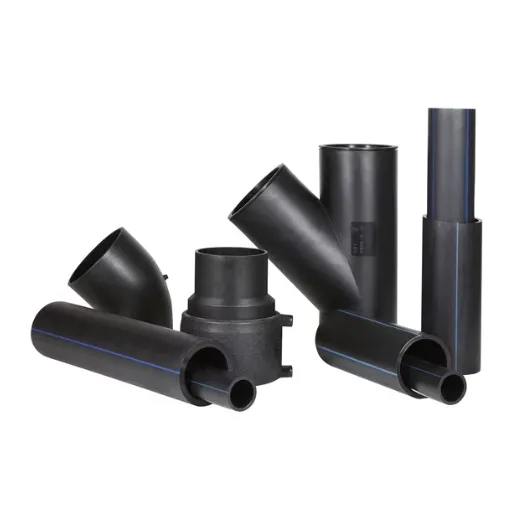
Overview of Fusion Equipment
Adopting fusion machinery, piping systems, and installation assumes a very important role in industrial piping systems, especially for thermoplastic pipes. Applying heat and pressure to join sections of pipe process fusion technique assures a uniform joint free from leakage under high-stress environments. The major fusion equipment categories are butt fusion machines, electrofusion units, socket fusion tools, and saddle fusion machines, each of which is provided for certain applications and pipe sizes.
Butt fusion machines ensure that pipes of different diameters are aligned, heated, and then pressed together under controlled conditions. Electrofusion equipment works with electrofusion fittings embedded with heating coils to provide more precise, automated joints. Socket fusion tools are used for smaller pipe diameters and involve heating one side of a pipe and the inside of a fitting at the same time before joining. Saddle fusion equipment is for joining branch lines to main pipes and calls for special heating fixtures to ensure accuracy.
For effective implementation, the technician must have operating, such as temperature ranges and alignment tolerances in relation to joint failure. Using current calibration tools, temperature monitoring, and operator training ensures the best operations for system integrity over the long term. As automation technology and real-time monitoring continue to evolve, fusion operators increasingly rely upon modern equipment to provide efficient and accurate solutions for industrial piping.
Steps for Successful Installation
-
1
Site Preparation: Start by visiting the site and confirming that all conditions have been met with regard to the installation. Remove anything that can act as debris, verify the proper alignment of the pipeline trenches, and ensure that environmental influences- negative or positive- such as temperature and humidity, are maintained within the permitted ranges set by the manufacturer of the material used. A very good preparation ensures clot-free joint formation and a reliable system not influenced by external effects. -
2
Equipment Calibration: Before commencing fusion activities, fusion equipment was duly calibrated following the standards specified in manuals. High-precision gages are used where necessary to verify that heating elements, pressure controls, and timing mechanisms are operating within the specified tolerances. In the event of ongoing projects of great length, periodic recalibration should be practiced to maintain consistent equipment performance and avoid unwanted errors. -
3
Material Inspection: Any piping materials and fittings are to be inspected for cases of damage, contamination, or manufacturing defects. These surfaces for welding should be cleaned properly by wiping off dust, grease, and moisture, as these contaminants usually decrease weld integrity. When cleaning, the use of approved cleaning agents compatible with the pipe material is allowed. -
4
Joint Preparation: Ensure pipe ends are cut squarely and are free of irregularity. Use pipe cutters or facing tools to trim them to the precise length so that the alignment of faces will be perfect. Misalignment causes uneven heat distribution and a weak joint that is almost equally likely to fail under pressure. -
5
Heating and Joining: The heating time and temperature ranges given in the material data sheets for the project must be followed. The heating plate surface temperature is to be checked by an infrared thermometer or built-in diagnostic tools. The two components are allowed to heat up uniformly, then are joined together by aligning and exerting the force recommended by the manufacturer, without any air gaps present. Then allow the joint to cool under pressure naturally; any variation would create stress-resistance variances. -
6
Final Inspection and Testing: A detailed inspection of the formed joints shall be carried out to check for evenly formed beads and apparent defects. Test the installed pipeline hydrostatically or pneumatically, depending on regulatory and project requirements, to ascertain that the installation is fit for purpose. Record all test results for future reference and compliance verification.
Carrying out the systematic steps and harnessing all technology at hand for precision would ensure that an operator gets installations of high quality in performance and durability.
Common Challenges and Solutions
Sometimes pipeline installations become a challenge that determines timelines, costs, or the very quality of a project. Here are some problems they could encounter and possible solutions, so to speak, as per best practices and technological trends currently adopted.
1. Material Defects
Challenge: A defective material, say, a pipe with micro-cracks or an inconsistency in composition, could result in premature failure of the system or at least its inefficient operation.
Solution: Strict quality control measures must be implemented during material procurement. Also, make use of modern NDT methods such as ultrasonic or radiographic inspection to reveal imperfections before installation begins.
2. Environmental and Geotechnical Concerns
Challenge: Environmental conditions such as unstable soils or excess moisture and seismic activities hinder the installation and even compromise the structure.
Solution: Take thorough geotechnical surveys to assess and understand the site conditions so the pipelines can be designed accordingly in the face of environmental stressors. When working in sensitive or unstable areas, trenchless methods such as horizontal directional drilling (HDD) could come into play to limit the extent of disruption while working towards stabilization.
3. Corrosion and Degradation
Challenge: With constant exposure to moisture, chemicals, or sudden temperature changes, corrosion may begin, and the pipeline would thus lose legitimacy within a few spans of years.
Solution: The best way to protect is to use protective coatings and cathodic protection systems and choose corrosion-resistant materials. Maintenance is critical, as are corrosion monitoring systems using sensor technologies installed within pipelines to provide real-time feedback on early signs of degradation.
4. Regulatory Compliance
Challenge: Rules and regulations differ and can get really complex when moving from one jurisdiction to another, causing delays in the implementation of projects and penalties for non-compliance.
Solution: Maintain a detailed understanding of applicable regulations at local, national, and international levels. Employ compliance management software to streamline documentation and ensure adherence to all legal and environmental standards.
5. Operational Downtime During Testing
Challenge: The testing and commissioning processes can last too long and disrupt operations, particularly in high-demand situations.
Solution: Automated pressure testing systems and real-time monitoring tools should be employed to allow expedited testing while still conducting thorough and accurate procedures. Moreover, advanced data analytics can be applied to facilitate the transition from testing to actual usage.
6. Workforce Training and Skill Gaps
Challenge: Employees who are not adequately trained or who use outdated procedures may cause installation errors and delays.
Solution: Initiate specialized training programs and certifications, plus continuous learning for technical teams. Apply new-age technologies like Augmented Reality for hands-on training simulations and remote expert assistance during complex installations.
In tackling these issues through innovative solutions and cutting-edge technology, operators improve operational efficiency and ensure the long-term reliability of pipeline systems.
Comparative Analysis of HDPE Fusion Pipes
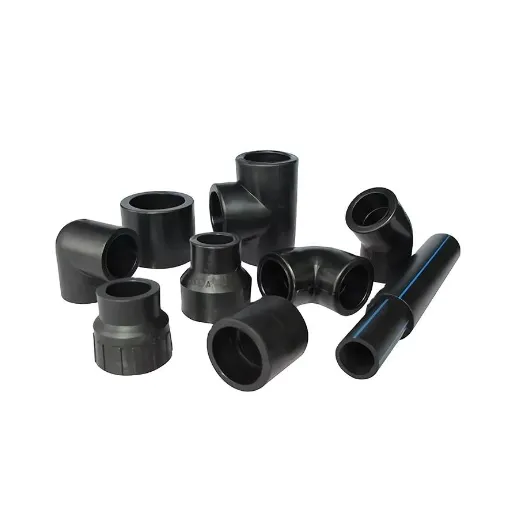
HDPE vs. PVC Pipes
HDPE pipes are traditionally flexible, durable, and sun-resistant, whereas PVC pipes are rigid and cheaper with a higher tensile strength.
| Aspect | HDPE | PVC |
|---|---|---|
| Flexibility | High | Low |
| Strength | Durable | Brittle |
| UV Tolerance | Resistant | Vulnerable |
| Chemical Suitability | Excellent | Moderate |
| Expense | Higher initial | Lower initial |
| Ease of Setup | Simple | Moderate |
| Pressure Handling | Dynamic | Static |
| Longevity | 100+ years | 100+ years |
| Connection Method | Heat fusion | Cement joints |
| Use Cases | Seismic, gas | Plumbing, water |
HDPE vs. Steel Pipes
Metal pipes have traditionally provided strong durability, capable of withstanding highly pressurized applications. In the past, steel pipes, high-grade and considered stronger, were installed. However, HDPE pipes boast many properties like being lightweight, corrosion-resistant, and flexible.
| Aspect | HDPE | Steel |
|---|---|---|
| Weight | Lightweight | Heavy |
| Corrosion | Resistant | Prone |
| Flexibility | High | Low |
| Durability | Long-lasting | High |
| Pressure | Moderate | High |
| Installation | Easy | Complex |
| Cost | Lower upfront | Higher upfront |
| Lifespan | 50-100 years | 20-50 years |
| Eco-Friendliness | Recyclable | Energy-intensive |
| Applications | Water, gas | Oil, structure |
HDPE vs. Copper Pipes
HDPE pipes are lightweight, withstand corrosion, and cost-efficient, whereas copper pipes are durable, antimicrobial, and recyclable.
| Aspect | HDPE | Copper |
|---|---|---|
| Weight | Lightweight | Heavy |
| Corrosion | Resistant | Prone |
| Flexibility | High | Low |
| Durability | Long-lasting | High |
| Cost | Lower upfront | Higher upfront |
| Installation | Easy | Complex |
| Lifespan | 50-100 years | 50-75 years |
| Eco-Friendliness | Recyclable | Recyclable |
| Antimicrobial | No | Yes |
| Applications | Water, gas | Plumbing, HVAC |
Fusion Services and Training
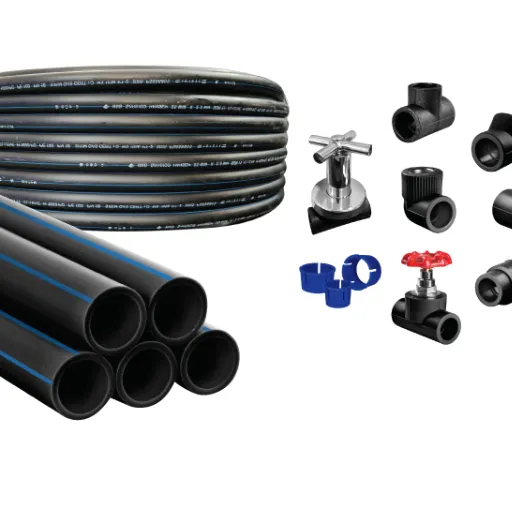
Choosing the Right Fusion Services
In deciding on the right fusion processes to select, I try to analyze the problem in terms of its requirements, together with compatibility of materials, application types, and long-term performance criteria. For example, if HDPE is used in my project, I will always want services that perform butt fusion or electrofusion methods to ensure maximum strength of the joint with bringing the most benefits to the polymer, e.g., flexibility and corrosion resistance. Copper services would include any welding or brazing service, as one needs to be aware of the antimicrobial nature of the metal and give it meticulous attention so that the joining process would ensure a sound and efficient connection.
Answering customer needs implies an assessment of the capability and qualifications a fusion service provider has. One of the keys to achievement and consistency of outcome is to guarantee that industry standards are followed and good training is given to the technicians who perform fusion. The best providers for me are those who have pre-established trends within my particular application field, suggesting they are aware of some of the problems and are also adept at conforming to technical specifications.
Then I consider the availability of training for my team from the provider. A good provider will provide not only fusion but also operator training on a hands-on basis, so operators are given the skills to take charge of installation, maintenance, and eventually, management of the work effectively. Upon considering these factors, I can confidently pick a fusion service provider who is best suited for my project and will guarantee lasting quality work.
Importance of Professional Training
Technical training and professional development provide precision, efficiency, and reliability crucial to technical performance. In the absence of proper industry-standard training programs in a stratum of practices, systems, and processes such as fusion services, the idea of legitimate importance can hardly be emphasized. These programs train the operators to have a deeper knowledge of all sorts of components within the system, be aware of the installation procedure, and troubleshoot any problem that may arise.
Well-trained individuals obviously master procedures leading to reduced human error, which is the greatest consideration in cases of equipment failure and inefficient systems. For instance, it is found that an increase of up to 35% in operational efficiency can be achieved with technicians who are trained adequately, and hence increased success rate for the project is guaranteed. Hence, keeping all the current methods sourced from international industry standards will keep the training program modern and geared towards the future.
Increasing the performance of learning by way of the use of high-end tools like simulation software coupled with real-life case studies, and hence allows for a hands-on experience that theoretical knowledge lacks. Focusing on constructive learning, professional training enhances operational competence and encourages innovation so that teams have the state of adaptability to apply any emerging technology as and when it arises. Hence, intensive training leads directly to measurable gains in performance, cost efficiency, and sustainable implementation of systems.
Future Trends in HDPE Fusion Technology
The field of HDPE fusion has been rapidly evolving, driven by advances in materials science, automation, and data fusion. The other great trend is the development of smart fusion machines with IoT capability. These systems provide real-time monitoring and analytics during the fusion process, ensuring temperature control, pressure limits, and alignment accuracy that drastically reduce the chances of joint failure.
Machine learning algorithms getting integrated with fusion equipment is another one of those big developments. This kind of system analyzes operational data to predict defects or misalignment before they ever occur, making it more efficient and reliable. Also, the use of advanced polymers with superior thermal and mechanical properties is changing the durability of fusion joints that allowing them to survive longer under extreme environmental conditions.
This is another important area of emphasis on sustainability, through processes aiming at reducing energy consumption and waste. Weld-on processes are an example in which less energy is consumed per weld, whereas integrating recycled HDPE material is also gaining ground in line with the global drive for a circular economy. The forecast report alludes to a promising outlook, where through the coming decade, the CAGR of applications of HDPE pipes is bound to rise substantially, mainly supported by capital investment in water infrastructure and energy transition projects.
In the future of converged digitization and improved material properties will be processes that make for efficient, green, and precise HDPE fusion. These putative earlier-generation technologies would position HDPE as a preferred option in water management, oil and gas, and telecommunication industry sectors.
References
-
ScienceDirect: Experimentation and optimization of HDPE pipe electro fusion and butt fusion welding processes
- Discusses various welding processes for HDPE pipes, including electrofusion and butt fusion.
-
Wiley Online Library: A review of the electrofusion joining process for polyethylene pipe systems
- Provides an in-depth review of the electrofusion process for polyethylene pipes.
-
ResearchGate: Determination of quality characteristics and performance of high-density polyethylene pipes in Selangor water applications
- Focuses on the performance and quality of HDPE pipes in water applications.
Frequently Asked Questions (FAQ)
Q: What is an HDPE fusion pipe?
A: An HDPE fusion pipe is a pipe constructed of high-density polyethylene and, due to its flexibility and durability, is widely used for several applications. These pipes are usually joined via fusion processes such as butt fusion or electrofusion to provide a strong, leak-proof joint.
Q: What are the merits of HDPE fusion pipes?
A: HDPE fusion pipes have several advantages, from being resistant to chemical action to being flexible and long-lived. Economical in their costs, these pipes find their application in water distribution, mining, landfill systems, etc. Being resistant to extremes of temperature and pressure allows the pipes to be installed in varied environments.
Q: How is the fusion process carried out for HDPE pipes?
A: Fusion of HDPE pipes involves heating the pipe ends to a particular temperature, pressing one heated surface against the other, so they weld together to form a strong bond. This process is the standard practice for heat fusion and results in a continuous, leak-free joint.
Q: What types of fusion services are offered for HDPE?
A: A host of fusion services for HDPE pipes exist, including on-site fusion, custom fabrication, and rental of fusion machinery, with many companies also providing training for operators to ensure the fusion techniques employed are correct and meet ASTM specifications.
Q: What is the importance of wall thickness in HDPE piping?
A: Wall thickness is important in HDPE piping because it determines the strength of the pipe and its pressure rating. The thicker the wall, the more strong the resistance it has to outside pressures. Great care is needed in the selection of the diameter and wall thickness according to the requirements of the particular job.
Q: Can they be put to use in geothermal conduit systems with HDPE fusion pipes?
A: Indeed, HDPE fusion pipes can be used for geothermal processes because these are not very serious temperature changes, and geothermal systems generate pressures that HDPE fusion pipes can readily withstand. The pipes, being flexible, enhance installation where varied terrains exist in installation companies.
Q: What is the role of a trainer in HDPE pipe fusion?
A: A trainer plays a great importance in ensuring that operators understand the fusion process, how fusion equipment is used, and provides hands-on training and guidance to certify the operators, with the end goal of preserving a high standard of safety and efficiency at the jobsites.
Q: What are fabricated fittings in HDPE fusion processes?
A: Fabricated fittings are holistically made fittings for connecting HDPE pipes in several configurations. These fittings may be manufactured according to the specifications of the application and may be fused to the pipe using usual fusion techniques, thereby guaranteeing a perfect and reliable connection.



